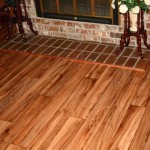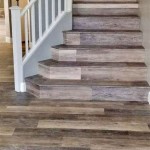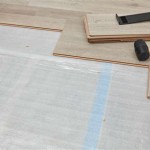The Enduring Appeal of White Oak Wide Plank Hardwood Flooring
White oak wide plank hardwood flooring stands as a premier choice for homeowners and designers seeking a combination of timeless aesthetics, exceptional durability, and the inherent warmth that only natural wood can provide. Its widespread popularity stems from a range of factors, including its versatile grain patterns, its ability to accept stains and finishes, and its structural integrity. This article delves into the characteristics, benefits, selection considerations, and maintenance aspects of white oak wide plank hardwood flooring, offering a comprehensive understanding of this premium flooring option.
The term "wide plank" generally refers to planks exceeding the standard width of 2 1/4" or 3 1/4" commonly found in traditional hardwood flooring. Wide planks can range from 5 inches to upwards of 12 inches or even more, significantly impacting the visual aspect of a room. Wider planks create a more expansive and less cluttered appearance, maximizing the natural beauty of the wood grain and minimizing visible seams. This effect is particularly desirable in larger spaces, where standard-width planks might appear fragmented or busy.
White oak, as the material base, is a hardwood species (Quercus alba) native to North America. It is distinguished from its red oak counterpart by its closed cellular structure, which makes it more water-resistant and less prone to shrinkage and swelling from moisture variations. This characteristic is crucial for flooring applications, especially in areas with fluctuating humidity levels. The color of white oak is generally light to medium brown, often exhibiting subtle variations and figuring that contribute to its unique character.
Understanding the Benefits of White Oak Wide Plank Flooring
The advantages of choosing white oak wide plank flooring extend beyond its aesthetic appeal. Its inherent properties and the resulting benefits make it a compelling option for discerning consumers.
Durability and Longevity: White oak ranks high on the Janka hardness scale, a measure of a wood's resistance to indentation and wear. This inherent hardness translates to a floor that can withstand heavy foot traffic, resist scratches and dents, and maintain its appearance for decades with proper maintenance. Wide planks, in particular, can benefit from the inherent stability of white oak, as wider boards are more susceptible to movement due to changes in moisture content. White oak's greater resistance to moisture minimizes this risk.
Versatility in Design: White oak's neutral color and consistent grain pattern make it exceptionally receptive to a wide range of stains and finishes. It can be easily stained to achieve a light, airy look, a rich, dark tone, or any shade in between. This adaptability allows homeowners to tailor the flooring to perfectly complement their existing decor and personal preferences. The wide planks further enhance this design versatility, allowing the wood grain to be showcased in its full glory. Various finishes, such as matte, satin, or gloss, can be applied to achieve different levels of sheen and protection, further influencing the overall aesthetic.
Increased Home Value: Hardwood flooring, in general, is a desirable feature that can significantly increase the value of a home. White oak wide plank flooring elevates this value proposition even further. Its premium appearance, durability, and longevity make it a worthwhile investment that appeals to prospective buyers. It is often seen as a sign of quality and craftsmanship, contributing to the overall perceived value of the property.
Key Considerations When Selecting White Oak Wide Plank Flooring
Choosing the right white oak wide plank flooring requires careful consideration of several factors to ensure optimal performance and aesthetics. This involves assessing your specific needs, understanding the different grades and cuts of white oak, and considering the impact of environmental factors.
Grade and Cut of Wood: White oak flooring is typically graded based on its appearance, with grades ranging from clear to rustic. Clear grade exhibits minimal knots and imperfections, offering a clean and uniform look. Character grade, on the other hand, showcases more knots, color variations, and other natural markings, lending a more rustic and authentic feel. Rift-sawn and quarter-sawn cuts are also factors. Rift-sawn planks are cut perpendicular to the growth rings, resulting in a very straight grain pattern and enhanced stability. Quarter-sawn planks are cut at a 45-degree angle to the growth rings, producing a distinctive flake pattern and increased resistance to warping. Plain-sawn (also known as flat-sawn) is the most common and least expensive cut, showcasing a cathedral grain pattern but offering less stability than rift-sawn or quarter-sawn cuts. The choice of grade and cut will significantly impact the overall appearance and performance of the flooring. Consider how much natural character you desire and what kind of budget you have.
Engineered vs. Solid Hardwood: White oak wide plank flooring is available in both solid and engineered construction. Solid hardwood planks are made from a single piece of white oak, while engineered planks consist of a thin layer of white oak veneer bonded to a multi-layered core, typically made of plywood or high-density fiberboard (HDF). Solid hardwood is generally considered more desirable for its longevity and potential for refinishing, but it is more susceptible to expansion and contraction due to moisture changes. Engineered hardwood is more dimensionally stable and less prone to warping or cupping, making it a better choice for areas with fluctuating humidity or where installation over concrete subfloors is required. The choice between solid and engineered depends on the specific climate conditions, subfloor type, and budget considerations.
Finish and Installation: The finish of the flooring plays a crucial role in its appearance and durability. Pre-finished flooring offers the convenience of having the finish applied at the factory, ensuring a consistent and durable coating. Unfinished flooring allows for custom staining and finishing on-site, providing greater control over the final look. The installation method also affects the floor's performance. Wide planks are generally installed using a nail-down, glue-down, or floating method. Nail-down is suitable for solid hardwood planks installed over wooden subfloors, while glue-down is often preferred for engineered planks installed over concrete. Floating installations involve interlocking planks that are not directly attached to the subfloor. Proper installation is essential to prevent issues such as gapping, cupping, and squeaking. Consider hiring a professional installer experienced with wide plank hardwood flooring to ensure a successful and long-lasting result.
Maintaining the Beauty of White Oak Wide Plank Floors
Proper maintenance is essential to preserve the beauty and longevity of white oak wide plank flooring. Regular cleaning and preventative measures will help protect the finish and prevent damage.
Regular Cleaning Practices: Frequent sweeping or vacuuming is crucial to remove dirt, dust, and debris that can scratch the finish. Use a soft-bristled broom or a vacuum cleaner with a floor brush attachment to avoid damaging the wood. Avoid using abrasive cleaners or scouring pads, as these can dull the finish and leave scratches. Occasional damp mopping with a floor cleaner specifically designed for hardwood floors is recommended to remove stubborn dirt and grime. Ensure that the mop is only slightly damp to prevent water from seeping into the seams and causing damage. Always follow the manufacturer's instructions for cleaning products.
Preventative Measures: Placing mats at entrances and area rugs in high-traffic areas can help protect the flooring from dirt and wear. Use furniture pads under the legs of chairs and tables to prevent scratches and dents. Avoid wearing shoes with high heels or cleats on the hardwood floor. Control humidity levels in the home to minimize expansion and contraction of the wood. Aim for a relative humidity of 30-50% to maintain optimal conditions for hardwood flooring.
Refinishing Considerations: Over time, the finish on white oak wide plank flooring may wear down or become scratched. Refinishing involves sanding the surface to remove the old finish and applying a new coat of stain and sealant. Solid hardwood floors can typically be refinished multiple times, while engineered floors can only be refinished if the veneer layer is thick enough. Refinishing can restore the floor to its original beauty and extend its lifespan. Consult with a professional flooring contractor to determine if refinishing is necessary and to ensure that the process is done correctly.
In conclusion, white oak wide plank hardwood flooring presents a compelling combination of aesthetic appeal, durability, and design versatility. Careful consideration of factors such as grade, cut, construction, finish, and installation will ensure that the chosen flooring meets the homeowner's specific needs and expectations. Proper maintenance, including regular cleaning and preventative measures, will preserve its beauty and extend its longevity.

How White Oak Flooring Is Changing Interior Design Carlisle Wide Plank Floors

Bellawood Artisan 5 8 In Vienna White Oak Engineered Hardwood Flooring 7 Wide Ll

White Oak Hardwood Flooring Vermont Wide Plank

Wide Plank White Oak Wood Flooring Gaylord

Bellawood Artisan 5 8 In Sanibel Island White Oak Distressed Engineered Hardwood Flooring 9 45 Wide Ll

Wide Plank Rustic White Oak Flooring Pre Finished Hardwood

Character White Oak Flooring River Road Pa Vermont Plank

Prestige Hillcrest View 8 6 Engineered Hardwood Victoria Wood Floors Wide Plank White Oak Living Room

Why Choose Wide Plank Live Sawn White Oak Flooring

Shaw Reflections White Oak Engineered Flooring Planks
Related Posts








